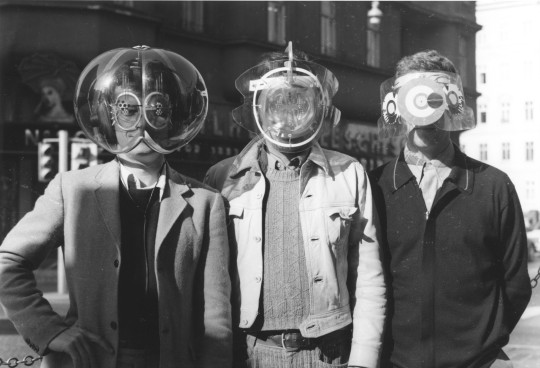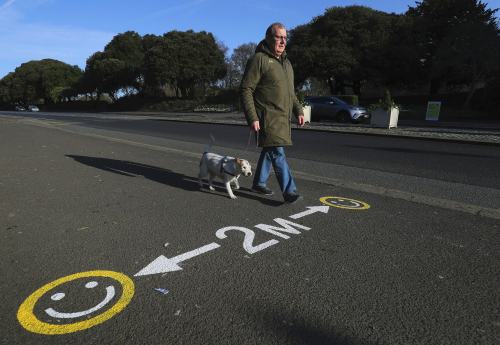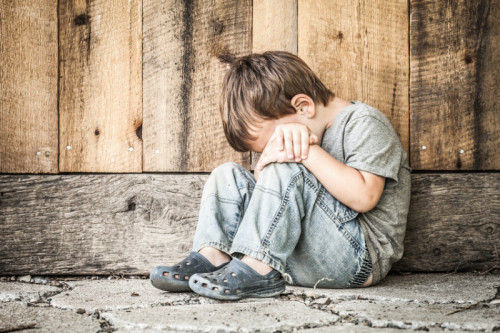#sociology
“our new covid-19 reality shows that people can change behavior.”
- bogotá, colombia expanded bikeways. photo: fernando vergara
- part of park avenue in manhattan was closed to vehicle traffic on march 27 to give pedestrians more space. photo: carlo allegri
- markings on pathways in a dublin park encourage people to keep their distance. photo: brian lawless
read more: “the magic of empty streets.” nytimes, 08.04.2020.
https://www.nytimes.com/2020/04/08/opinion/coronavirus-tips-new-york-san-francisco.html
https://www.spur.org/news/2020-04-08/magic-empty-streets
Post link
The Flaming Lips Perform in Giant Bubbles on Colbert
A quarantine performance for the ages
If anyone’s equipped to perform during a pandemic, it’s The Flaming Lips. Even before the pandemic, the band’s frontman, Wayne Coyne, often could be found performing inside a giant bubble. For their appearance on the Late Show with Stephen Colbert on Wednesday night, the band expanded on that concept. Not only did Coyne’s bandmates each get their own bubble, so too did the audience gathered to watch their performance of “Race For the Prize”. Catch the replay below.
“Race For the Prize” appears on The Flaming Lips’ The Soft Bulletin, which celebrated its 20th anniversary last year. Recently, the band teamed with Kacey Musgraves for a new song called “Flowers of Neptune 6”. They also released Deap Lips, a collaborative album with the garage rock duo Deap Vally.
Source:Consequence of Sound
First obvious association coming to my mind is with the visionary projects by Haus-Rucker-Co, from the late 60s on:
Put into the context of Haus-Rucker-Co’s general use of inflatables, as well as today’s emerging fresh-air market—with multiple links explaining this in the actual post—I suggest that what was once an almost absurdist art world provocation has, today, in the form of bottled air, become an unexpectedly viable business model. (Source: BLDGBLOG)

[Image: Haus-Rucker-Co, Grüne Lunge (Green Lung), Kunsthalle Hamburg (1973); photo by Haus-Rucker Co, courtesy of the Archive Zamp Kelp; via Walker Art Center, via BLDGBLOG]

[Image: Haus-Rucker-Co, Enviornment Transformers (1968) © Haus-Rucker-Co/Gerald Zugmann, via Archdaily]
Post link
Connection between childhood adversity, psychiatric disorders seen at cellular level
In a new study published online in Biological Psychiatry on January 16, 2015, researchers from Butler Hospital identify an association between biological changes on the cellular level and both childhood adversity and psychiatric disorders. These changes in the form of telomere shortening and alterations of mitochondrial DNA (mtDNA), are important in the aging process, and this new research provides evidence that psychosocial factors–specifically childhood adversity and psychiatric disorders– may also influence these cellular changes and could lead to accelerated aging.
Mitochondria convert molecules from food into energy that can be used by cells and also play a key role in cellular growth, signaling, and death. Telomere shortening is also a measure of advanced cellular aging. Recent studies have examined the possible connection between mitochondria and psychiatric disorders, but the research is very limited, and no prior work has examined the relationship of mitochondrial DNA to psychosocial stress.
“We are interested in these relationships because there is now clear evidence that stress exposure and psychiatric conditions are associated with inflammation and health conditions like diabetes and heart disease. Identifying the changes that occur at a cellular level due to these psychosocial factors allows us to understand the causes of these poor health conditions and possibly the overall aging process.” said Audrey Tyrka, MD, PhD, Director of the Laboratory for Clinical and Translational Neuroscience at Butler Hospital and Associate Professor of Psychiatry and Human Behavior at Brown University.
Audrey R. Tyrka, Stephanie H. Parade, Lawrence H. Price, Hung-Teh Kao, Barbara Porton, Noah S. Philip, Emma S. Welch, Linda L. Carpenter. Alterations of Mitochondrial DNA Copy Number and Telomere Length with Early Adversity and Psychopathology.Biological Psychiatry, 2015; DOI: 10.1016/j.biopsych.2014.12.025
Post link
This world isn’t perfect. People aren’t perfect. You aren’t perfect, and I’m not perfect. Mistakes will happen. Screw ups will be made. But, we have the power of forgiveness. So live. Live without the burden and choose to forgive. Choose to look beyond and love even the imperfections.
El síndrome de las envolturas
La fisionomía es el forro precario, que si bien goza de sublimidad estará desprovista de prejuicios, si es lo opuesto, será sometida a una retahíla de perspectivas execrables.
Las entretelas de un temple solo se ahondan cuando se desintegra el encanto augurado en el momento en que somos persuadidos por la exquisita y aterciopelada textura mortal.
Cada rostro es un resquicio en el que se vislumbra gradualmente la forma de un averno, o, un paraíso.
Magnanimidad y hostilidad ¿Qué es lo que tenemos a cambio de una atracción desmedida?
“Los monstruos son ahuyentados y los agraciados mimados”. Esto conlleva a una lábil concepción de lo que vemos. Insoslayablemente existe una propensión a depositar convicción a todo lo que represente belleza, y comúnmente las imágenes que simbolizan a las divinidades adoradas no son tan hórridas.
No podemos obviar el hecho de que la primera impresión siempre bosqueja qué sensaciones tendremos respecto a la apariencia humana. Casualmente, en la mayoría de estos casos no es subjetiva, pero es coherente dado que solo hacemos un balance de aquello que percibimos.
Al parecer es más fácil enamorarse de alguien sin conocerlo que descubriendo todo lo que abarca su personalidad.
Hay que tener en cuenta que esto sucede porque al enamorarnos concebimos a un ser que encaje perfectamente con nuestra expectación y ponderación, y todos estos atributos inciertos van dirigidos para quien estamos predilectos. Y ¿Acaso este sea el gran temor a enamorarse? No, por supuesto que no, porque los que ahora temen al amor han sido resquebrajados en el futuro sin poder colmar alguna de sus expectativas.
Livianamente esto figuraría ser un bucle en el que la suspicacia o credulidad solo se accionan con el contacto visual. Es decir, se abrirán de par en par las puertas de la afinidad si es bien parecido y se bloquean con desdén frente a una desapacible sensación.
Constantemente somos embelasados por una piel templada, por unos labios carnosos y una mirada deslumbrante en cuestión de instantes. Cuando una mente imponente se atraviesa, fluctúan los sentidos, quedamos anonadados y la respuesta que tenemos solo parece alquimizarse en una hosca atmósfera.
Todos aspiran alcanzar el nirvana con el ser que adoran. La envoltura es un imperativo, qué importa lo que contenga.
AI extender el deseo colisionamos con la monotonía sexual y corpórea. Aborrecemos lo primero que nos cautivó y nos domina la búsqueda por un formidable temperamento, sonsacando hasta el más ínfimo rasgo para una propicia sincronía.
Nos deshacernos de lo superfluo porque después del placer despunta el vacío natural que se siente al no haber correlación entre un cuerpo y el alma.
One can change their clothes, their hair, their house, or their relationship. However, the same experiences will keep on occurring if one does not learn to change their mind.
You will experience both the good and the bad. You will be able to enjoy the good, and learn from the not as good. Either way, it involves self development on your own behalf.
Today is your day; live freely. Work hard and take risks. But most importantly, love yourself until no end.
If that’s what you think is best, go, but seriously don’t come back.
I have always loved how she appears in the photos, her beautiful face, every curve of her body; but I knew that I loved her with all my heart when I saw her in her pajamas, disheveled, without makeup, crampy, sick, sad, happy, doing what she loves, leaving work, and to me, she was the most beautiful woman in the universe.

A year ago today, #AmandaGorman’s#spokenword poem captivated the world. In her new book #SpeakingTruths, sociologist (and TSC founder) Valerie Chepp shows how #youth use spoken word #poetry & the power of their own biographies to incite #justicehttps://tinyurl.com/34n8cyxjhttps://tinyurl.com/u3tsanac#activism@RutgersUPress

TSC Sociologist, Valerie Chepp, recently published a new edited volume titled, “Readings in Social Justice: Power, Inequality, and Action.” A particularly poignant excerpt is from bell hooks’s “Engaged Pedagogy” https://titles.cognella.com/readings-in-social-justice-9781793527677
In academic circles, we have a half-joking-but-not-really saying: “All Research Is Me-Search,” and Leigh Cowart’s new book has taken that dictum to titanic new heights and visceral, evocative depths.
Cowart is a former ballet dancer, a biologist who researched Pteronotus bats in the sweltering jungles of Costa Rica, and a self-described “high-sensation-seeking masochist.” They wrote this book to explore why they were like this, and whether their reasons matched up with those of so many other people who engage is painful activities of their own volition, whether for the pain itself, or the reward afterward. Full disclosure: Leigh is also my friend, but even if they weren’t, this book would have fascinated and engrossed me.
Hurts So Good is science journalism from a scientist-who-is-also-a-journalist, which means that the text is very careful in who and what it sources, citing its references, and indexing terms to be easily found and cross-referenced, while also bringing that data into clear, accessible focus. In that way, it has something for specialists and non-specialists, alike. But this book is also a memoir, and an interior exploration of one person’s relationship to pain, pleasure, and— not to sound too lofty about it— the whole human race.
The extraordinarily personal grounding of Hurts So Good is what allows this text to be more than merely exploitative voyeurism— though as the text describes, exploitative voyeurism might not necessarily be a deal-breaker for many of its subjects; just so long as they had control over when and how it proceeds and ends. And that is something Cowart makes sure to return to, again and again and again, turning it around to examine its nuances and infinitely fuzzy fractaled edges: The difference between pain that we instigate, pain that we can control, pain we know will end, pain that will have a reward, pain we can stop when and how we want… And pain that is enforced on us.
Read the rest of “Review: Hurts So Good: The Science and Culture of Pain on Purpose, by Leigh Cowart”atTechnoccult.net
Autism and Society Survey
Hello everyone,
I wanted to take the time to share this survey I’ll be working on for my research paper this semester. The topic is autism spectrum disorder (ASD) and how societal variables such as gender norms, race, and socioeconomic statues may influence individual’s with ASD. This is a rarely touched upon topic in sociology, but one I believe is very important to understand.
To take part in this survey, you must be either medically or self-diagnosed with autism spectrum disorder and be 18 years old or older. If you or someone else you know fit the criteria, I would truly appreciate it if you’d take the time to complete this short survey so that I may collect further data on the topic.
Even if you are unable to take the survey yourself, it’ll help if you can share and reblog this survey link to spread the word:
https://qfreeaccountssjc1.az1.qualtrics.com/jfe/form/SV_86zS3cG5sjnDNt4
If you have further questions, feel free to ask. Thank you!
In 2007, María Sumire led new legislation to implement Article 48 from the Peruvian Constitution. Law 29735 introduces individual rights on the use, preservation, growth, recuperation, and diffusion of Indigenous languages. A public information campaign promoted the new laws (“Speak your language, it’s your right). The law facilitates regulated access to an interpreter when accessing social services, new public service hiring laws, and targeted bilingual education policies.
Cusco, Ayacucho, and other Indigenous regions funded not-for-profits to improve language services, schools were mandated to teach Quechua and other local Indigenous languages, and courts and other public services also incorporated bilingual processes.
In Cusco, Quechua is an official regional language, meaning that public servants must speak at least basic Quechua. It has one of the largest budgets and governance structures, due to high revenue from tourism, allowing the region to invest in Quechuan language autonomy.
Post link
The Economic and Social Costs of COVID-19
This is the last in this series about Race and COVID-19. Our panel looks at the impact of the pandemic on undocumented migrant workers, whose labour is exploited in Australia. The economy depends upon the work of racialised people, exposing them to high risk through the casualised frontline services that have kept the health system, and other businesses, going during lockdown. At the same time, racialised people are provided inadequate protections against infection, including poor personal protective equipment. Racialised people in general are disproportionately employed in sectors that have the highest rates of Coronavirus, including in hospitals, factories and abattoirs, where they are given little workplace rights, including sick leave. In other cases, migrant workers and international students were left without a safety net when Australia went into lockdown. They were simply told to go home, or else make do without the economic subsidies available to other Australians, even though for many of these migrants, Australia is their home.
Our panellists talk about the ‘punitive immigration policies’ which have impacted undocumented workers during the Coronavirus crisis, and how the theory on ‘curated storytelling’ plays out in race dynamics during the pandemic.
Panellists
Sanmati Verma is an Accredited Specialist in Immigration Law. She has practiced exclusively in the area of migration law since her admission to practice in 2010. She is a migrant rights activist and immigration lawyer with the United Workers Union and the Migrant Workers Centre. In addition to her practice, Sanmati conducts regular community legal education and training seminars in refugee and migration law. She is currently a member of the Law Institute of Victoria’s ‘Legacy Caseload Working Group’ and was previously the chair of the Refugee Law Reform Committee. Sanmati was nominated for the Law Council of Australia’s award for Young Migration Lawyer of the Year in 2014 and 2015.
Sujatha Fernandes is a Professor of Political Economy and Sociology at the University of Sydney. Previously she was a Professor of Sociology at Queens College and the Graduate Center, City University of New York. Fernandes is the author of Cuba Represent! Cuban Arts, State Power, and the Making of New Revolutionary Cultures (Duke University Press, 2006), Who Can Stop the Drums? Urban Social Movements in Chávez’s Venezuela (Duke University Press, 2010), Close to the Edge: In Search of the Global Hip Hop Generation (Verso, 2011), and Curated Stories: The Uses and Misuses of Storytelling (Oxford University Press, 2017). Her latest book is The Cuban Hustle: Culture, Politics, Everyday Life (Duke University Press, 2020). She is an editorial board member of Transition: The Magazine of Africa and the Diaspora.SHOW LESS
COVID-19 mass vaccination behavioural process
From participant observation research conducted in late July to mid-August.
- Wait times for bookings at the Sydney mass vaccination site are up to two months for non-priority groups
- Despite holding pre-scheduled appointments, on the day, the public lines up outdoors for up to two-hours. This makes for a physically uncomfortable and de-motivating experience
- Behavioural barriers during the mass vaccination experience may impact people’s willingness to return for their second dose in a timely way. For example:
- the line-up system is confusing
- it’s hard to hear staff directions
- inadequate accessibility
- lack of social distancing outdoors
- few signs and instructions
- lacking cultural safety for Aboriginal and Torres Strait Islander people
- poorly promoted multilingual services for migrants
- insufficient communication about extended wait times mean people may not be properly prepared to stand in line for so long
- Behavioural science evidence could be used to improve the customer service experience, by:
- improving physical cues, to encourage COVID-19 safe behaviours, and
- using behavioural messages to motivate customers to return for their second vaccination dose on time.
Read more on my blog.
[Image: Infographic on COVID-19 Mass Vaccinaton Behavioural process. On the left, what it is currently: 2 month wait, routine sms, long delays, routine follow-up. On the right what could be improved: timely access, behavioural prompt, enhanced service]
Post link
Lockdown, Healthcare and Racist Ableism
In Episode 4 of our Race in Society series, Associate Professor Alana Lentin and I spoke with three health experts to unpack how racist ableism drives the management of lockdown and healthcare during the pandemic. Ableism is the discrimination of disabled people, based on the belief that able-bodied people (people without disability) are superior, and the taken-for-granted assumptions that able-bodied experiences are “natural,” “normal” and universal. Racist ableism describes how ableism intersects with racial discrimination (unfair treatment and lack of opportunities, due to ascribed racial markers such as skin colour or other perceived physical features, ancestry, national or ethnic origin, or immigrant status).
In “Lockdown, Healthcare and Racist Ableism,” we explore the ways in which Aboriginal and Torres Strait Islander people living with disabilities can be better supported in the health system, how to establish cultural safety during the pandemic, and what an anti-racist response to healthcare might look like.
First, we spoke with June Riemer, the Deputy Chief Executive Officer of the First Peoples Disability Network. She discussed the Network’s advocacy on the Royal Commission into Violence, Abuse, Neglect and Exploitation of People with Disability, and the impact of COVID-19 on Aboriginal people with disability. Second, Associate Professor Lilon Bandler is a Principal Research Fellow for Leaders in Indigenous Medical Education Network. She spoke about cultural safety and the imposition of heavier restrictions on racial minorities during lockdown. Finally, Dr. Chris Lemoh is an infectious disease expert and general physician at Monash University Health. He discussed his advice to the Victorian Department of Health and Human Services, after the Department put nine social housing towers in Melbourne under heavily armed police lockdown. The majority of these residents were migrants and refugees. No other neighbourhood was policed in Melbourne in the same way.
These patterns are now being repeated in Sydney. Eight multicultural suburbs have been put into a “hard lockdown,” including visits by police and military personnel. To see how our guests’ work still resonates in the current context, watch our video, and read a summary below.
Post link










